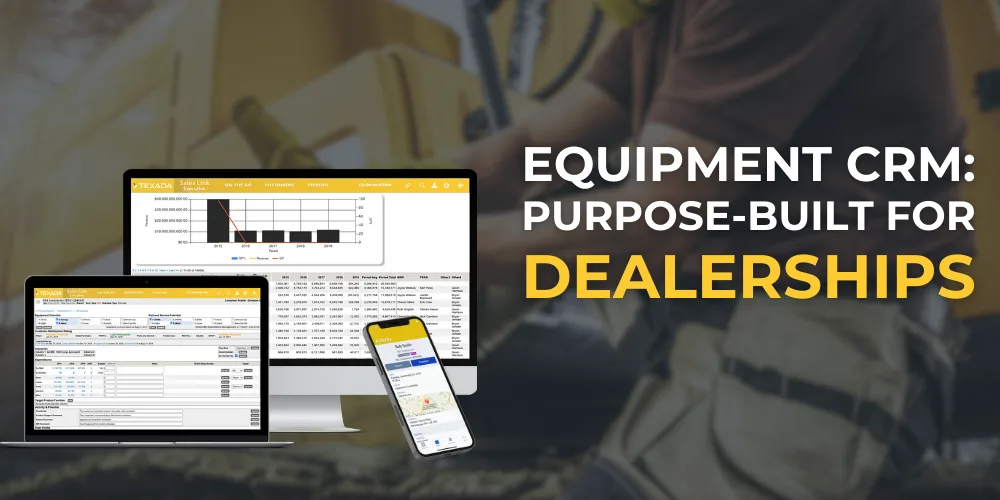Software-as-a-service (SaaS) revolutionizes how small to medium-sized businesses (SMBs) access and leverage software. Companies can significantly reduce upfront costs traditionally associated with software purchases by choosing SaaS. They avoid the ongoing hardware maintenance expenses that often strain financial resources. Moreover, SaaS providers typically offer subscription-based pricing models, allowing SMBs to select services that align closely with their specific budgetary requirements and scale as necessary over time.
Scalability: Easily Matching Growth with Demand
A key benefit of SaaS platforms is the ability to scale services alongside business growth. Companies often experience fluctuations in demand, requiring a dynamic level of service and support from their software solutions. SaaS inherently provides flexibility, allowing for seamless upscaling or downscaling based on current business requirements.
Users of SaaS products observe that varying customer needs dictate the application’s adaptability. Adapting quickly to market demands or customer behavior without requiring extensive manual effort defines competitive advantage. SaaS platforms are designed to support this adaptability, allowing businesses to respond promptly to change.
Furthermore, the cost-effective nature of scaling through a SaaS model remains evident. Traditional software might necessitate significant capital for infrastructure growth and additional licensing. Conversely, SaaS systems eliminate this need, offering scaling solutions that negate substantial upfront investments. Upgrades to increase capacity or add features cater to organizational growth without corresponding increases in infrastructure costs.
Pro Tip: Utilize SaaS for effortless scalability, allowing your business to dynamically adjust service levels in response to fluctuating demands without significant upfront investments or infrastructure changes.
Ease of Use and Deployment
SaaS platforms offer simplified user interfaces, allowing individuals without technical expertise to navigate and operate the software efficiently. Providers design these interfaces with the user experience in mind, ensuring a gentle learning curve. Users benefit from a straightforward, intuitive experience that negates the need for extensive training or technical know-how.
Deployment speed is a standout advantage of SaaS solutions. Companies can roll out applications rapidly, significantly reducing downtime compared to traditional software installation processes. This swift deployment is due to the cloud-based nature of SaaS, with the software being ready to use almost immediately after subscription, resulting in immediate productivity gains.
Streamlined operations emerge as businesses employ user-friendly web-based tools integral to SaaS platforms. These tools foster efficient workflows by aligning with common work practices and enabling teams to manage tasks with greater autonomy and less dependency on IT support. It leads to a smoother operation, promoting productivity within a user-centric digital environment.
Pro Tip: Leverage SaaS platforms for their intuitive interfaces and rapid deployment capabilities to boost productivity and streamline operations without extensive training or IT support.
Flexibility and Mobility with SaaS
The advent of SaaS has transformed how businesses operate, providing unprecedented flexibility and mobility. SaaS solutions enable users to access services and data anytime and anywhere through the internet. This capability supports diverse business activities, including remote work and field operations. Users in various locations can connect to their company’s software platforms without needing traditional on-premise infrastructure or complex VPN setups.
Empowering Remote Work and Field Operations
Businesses can extend their reach beyond the confines of a physical office by utilizing SaaS. Remote employees gain the ability to interact with company databases, enter information in real-time, and collaborate effectively with teams despite geographical differences. Field workers such as sales representatives or service technicians can benefit from entering data and accessing vital information while moving.
Integrating the Mobile Workforce Seamlessly
As the number of mobile workers rises, SaaS applications cater to this shift by offering mobile-friendly interfaces and functionalities. Employees can now carry out their tasks using smartphones or tablets, integrating into company workflows without a hitch. This seamless integration enhances productivity and ensures that vital processes continue uninterrupted regardless of an employee’s location.
Pro Tip: Maximize the flexibility and mobility of your workforce by adopting SaaS solutions, enabling seamless access to services and data from any location and supporting efficient remote work and field operations with mobile-friendly interfaces.
Improved Collaboration and Workflows
SaaS transforms collaboration within and between organizations. By enabling shared data and application access, teams interact with the same information and tools regardless of physical location. This accessibility ensures continuity and consistency in collaborative tasks.
- Shared Data and Application Access: SaaS provides a single source of truth, where updates or changes made by one team member become instantly available to all authorized users. The result is a coordinated effort where team members rally around shared goals and objectives, leading to faster and more informed decision-making processes.
- Real-Time Updates Promoting Efficient Project Management: Project management thrives on timeliness and accuracy. SaaS platforms update in real-time, which means that project timelines, resource allocation, and task completion statuses are always current, reducing the risk of project overruns and enabling more agile responses to any changes or issues that may arise.
- Streamlined Communication Channels for Internal and External Collaboration: Communications via SaaS solutions often include integrated chat tools, video conferencing, and email systems that align with workflow processes. These capabilities enable direct and immediate communication among stakeholders, fostering transparency and facilitating quicker resolution of inquiries or issues that may impact workflow.
Access to Advanced Technologies
SaaS enables organizations to leverage cutting-edge tools that would otherwise require substantial upfront investments. Advanced technologies such as artificial intelligence (AI), machine learning, and analytics can be integrated into your business processes as part of what a SaaS provider offers. As a result, you can stay competitive by utilizing industry-leading applications that are often packaged into the service without the need for additional spending on infrastructure, licensing, or staffing that these advanced solutions typically demand.
- Leveraging cutting-edge tools without hefty investments: SaaS providers invest in the latest technologies so their customers don’t have to. Access these tools via the cloud, saving on the financial burden of constant hardware and software upgrades.
- Exploring AI, machine learning, and analytics as part of SaaS offerings: SaaS platforms frequently incorporate AI and machine learning algorithms to enhance their services, from personalized recommendations to advanced data analysis capabilities. Clients can harness these sophisticated features to gain insights, automate tasks, and enhance decision-making processes.
- Staying competitive by utilizing industry-leading applications: SaaS products often encapsulate the most up-to-date versions of applications. Utilize these applications to maintain a competitive edge in rapidly evolving industries, ensuring that the latest features and best practices are always at your team’s disposal.
Enhanced Security Features
- Advanced Security Measures: SaaS providers offer superior security protocols, protecting against data breaches, unauthorized access, and cyber threats.
- Cost and Complexity Reduction: Offloading cybersecurity to SaaS providers reduces the need for in-house security management, allowing businesses to focus resources on growth and innovation.
- Regulatory Compliance: SaaS solutions adhere to stringent regulatory standards, ensuring businesses automatically meet industry-specific data protection requirements critical in sectors like healthcare, finance, and education.
Customizability and Integration
Companies opting for SaaS benefit from the ability to personalize software to align with their unique business processes. Businesses require tools that adapt to their workflows, and SaaS offerings rise to this challenge by providing various customization options. Tailoring features, interfaces, and capabilities ensures the software delivers value specific to each business’s needs.
Furthermore, by connecting various enterprise applications, SaaS can streamline operations across an organization. Ensuring that separate applications, such as accounting software, project management tools, and HR systems, work together can dramatically improve operational efficiency. For example, using application programming interfaces, a SaaS accounting platform can receive real-time updates from a project management tool, which helps maintain accurate financial records and improves resource allocation.
Pro Tip: Enhance your business processes by leveraging SaaS customizability to tailor software features to your needs. Integrate SaaS with existing on-premise systems to streamline operations and safeguard previous IT investments.
Focus on Core Business Activities
Adopting SaaS translates into a shift of resources from IT maintenance to strategy-centric tasks. Companies no longer have to allocate significant time or personnel to handle software updates and troubleshooting. This reallocation allows businesses to dedicate more effort to strategic planning, market expansion, and other core activities that drive business growth.
Business agility stands at the forefront of SaaS adoption. Companies using SaaS solutions can react quickly to market changes because they count on the vendor to manage the technological backend. This dynamic ensures that organizations stay on the edge of innovation without investing in extensive IT training or expensive hardware upgrades.
Moreover, the partnership with SaaS providers further streamlines a company’s operations. Vendors not only take charge of the software’s continuous updates and support, but they also shoulder the responsibility for the robustness of the application’s performance. Such partnerships enhance business processes and outcomes by allowing in-house teams to focus on delivering value-specific outcomes to their clients and stakeholders.
Reduced Time to Benefit
- Quick ROI Realization: SaaS applications are immediately available, allowing rapid deployment and use, leading to faster return on investment than traditional software installations.
- Speedy Business Process Execution: Prebuilt SaaS solutions have out-of-the-box features that shorten system configuration and customization time.
- Immediate Value Generation: SaaS reduces the lag between implementation and value generation, enabling rapid operational transformation and faster achievement of business goals.
Professional Support and Maintenance
Subscribing to SaaS provides access to dedicated support teams. These professionals work tirelessly to resolve issues promptly, ensuring software functions smoothly for your business. Regular communication with experts means that any technical challenge is swiftly resolved.
Moreover, SaaS users benefit from adopting best practices and receiving expert guidance on application usage. As SaaS providers specialize in their products, they offer informed insights and tailored advice that can optimize how your organization uses the application. This expertise allows businesses to leverage the software’s potential to achieve their objectives fully.
Pro Tip: Take advantage of SaaS providers’ dedicated support to ensure seamless operations and continuous business productivity while leveraging their expert guidance to optimize software usage and achieve your business goals.
Performance and Reliability with SaaS Applications
Performance and reliability are not concerns left to chance when subscribing to SaaS solutions; they are integral to service provision. Businesses that choose SaaS can generally expect seamless and steadfast application performance. This confidence stems from vendors who specialize in their offerings and dedicate substantial resources to maintaining the highest service delivery standards.
Consistent and Robust Application Performance
SaaS providers architect their platforms with redundancy and scalability to manage varying loads effectively. For instance, Salesforce, a leader in cloud-based CRM, ensures its application delivers optimized performance under different conditions, which Salesforce cites as part of its commitment to providing an always-on experience for its customers. This managed performance often surpasses what companies could achieve with on-premises installations, mainly due to economies of scale and specialized expertise from the provider.
Relying on Vendor Expertise for High Application Uptime
The expertise of SaaS vendors is a key factor in the high uptime numbers assured by these services. This is made possible through its investment in global infrastructure and continuous connectivity monitoring, tasks often beyond the scope and ability of individual businesses or in-house IT teams.
Utilizing Service-Level Agreements to Guarantee Reliability
Service Level Agreements (SLAs) serve as a formal commitment to reliability. They outline the expected service performance, including details on uptime and compensation for any failures to meet agreed-upon service levels. A study by Gartner suggests that thorough SLAs can lessen business risks by defining exact performance metrics that providers must adhere to. These agreements hold the SaaS provider accountable, assuring businesses that the critical applications they rely on will remain operative and productive.
Pro Tip: Ensure consistent and reliable application performance by choosing SaaS solutions with strong Service Level Agreements (SLAs), leveraging vendors’ expertise and global infrastructure to maintain high uptime and optimized performance.
How Can Using a SaaS Stack Save You Money and Streamline Your Workflows?
SaaS has become increasingly prevalent over the past few years. It is a software delivery method where everything the customer needs can be accessed via a simple internet connection. There is no need for expensive hardware installations—just internet access and a device that can connect online.
Texada uses the SaaS model to deliver its products to customers. Customers save on software, server hardware, and operating system costs. We handle all that so our customers get continuous and reliable access to the one-stop shop, the Texada platform.
A great SaaS vendor can be a game-changer for a business. Not convinced?
Here are the top ten benefits of a high-quality, customer-focused SaaS provider:
| Benefit | Description |
| Easy and Instant | Deployment is fast; all you need to access the platform is to open your internet browser. Then you can get to work in no time! |
| Affordable | The lack of on-site equipment means it’s far less of an investment— no need to buy expensive servers or pay for costly installation and deployment. |
| IT Coverage | You also don’t need to take care of IT—that’s all done by the SaaS provider! It reduces staffing costs and provides the best possible security for your business. |
| Stay Up-To-Date | The SaaS provider handles all the back-end updates, so you don’t have to worry about updating your systems. You just need to log in and enjoy the constant improvements of your software. |
| Maximize Your Up Time | Updates are usually scheduled for after work hours, ensuring minimal downtime and high availability and keeping your workflow moving forward without interruptions. |
| Everything Stays Backed Up | A good SaaS vendor will perform regular backups to ensure the safety of all your data. |
| Stay Connected Globally | Since all you need is an internet connection to access SaaS platforms, you can be anywhere in the world and still have the same access to the software as you would at the office. |
| Keep Your Files Secure | Any good SaaS company knows that security is paramount. Network, internal systems, operating systems, and application security work together to ensure data stays safe. |
| Scale Up With Ease | Since most SaaS solutions are subscription-based, you can easily upgrade and manage your services depending on your business needs without upgrading physical infrastructure. |
| Customer Service | SaaS vendors ensure their customers are happy by providing excellent support that helps leverage the products to benefit the business. |
Still not convinced that SaaS is the future of the industry? Book a demo today, and let us show you how Texada’s SaaS solutions can take your company to the next level.
Key Takeaways
- SaaS reduces upfront and ongoing expenses by eliminating the need for costly hardware and complex installations. The subscription-based pricing models offer flexibility, allowing businesses to scale services up or down according to their needs without significant capital investments.
- SaaS platforms are designed with user-friendly interfaces that require minimal technical expertise. Deployment is swift, enabling immediate access and productivity without the delays associated with traditional software installations.
- SaaS solutions support remote work and field operations by providing access to applications and data from anywhere with an internet connection. This capability fosters a mobile workforce and ensures continuous business operations regardless of location.
- SaaS providers offer superior security measures and compliance with regulatory standards. They handle updates and maintenance, ensuring high uptime and robust performance, which allows businesses to focus on core activities without worrying about IT management.





